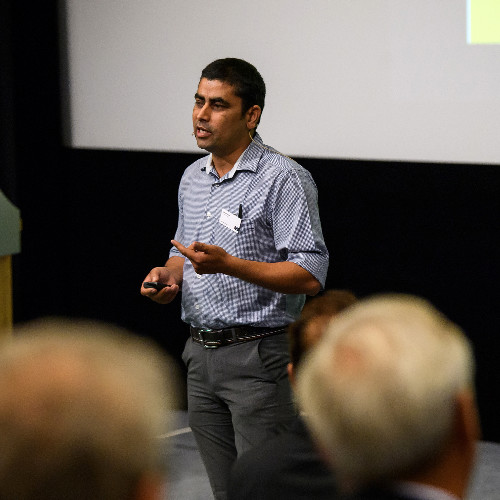So many steps forward … And now one big step back
by Puneet Chopra, Lokesh Singh and Graham Wright
Nov 9, 2018
7 min
After the progress made on setting a regulatory and policy framework to enable financial inclusion, this blog raises concern over the decision that puts a cap of 1% for agent transaction.
The January 16th, 2015, Office Memorandum (OM) from the Department of Expenditure of the Ministry of Finance fixes commission for banks distributing direct benefit transfers (DBT), including those for LPG – liquid petroleum gas. The OM states that for urban schemes like DBTL (the LPG subsidy), the transaction cost may be paid at the NEFT rate or the APB rate as per the extant RBI or NCPI circulars. For rural schemes “like pensions, NREGA, pre-matric scholarship, maternity benefits etc., where a large number of transactions are likely to be through the Business Correspondents the transaction charges may be paid @ 1% subject to an upper limit of Rs.10 per transaction”.
After the extraordinary progress made in the last nine months on setting a regulatory and policy framework to enable and encourage financial inclusion, this OM looks like a significant setback. Given the excellent work that the Ministry of Finance’s Department of Financial Services has been doing to drive and monitor the implementation of the rollout of the PMJDY, it seems all the more strange that this OM should emanate from the same Ministry.
The conservative commission announcement seems to reflect a Government mindset that it is an expense and not an inevitable investment for the success of PMJDY and the expected social and financial returns. The massive potential of savings on FFF (fuel, food, and fertilizer) and all other subsidies through targeted distribution and the resultant salutary impact on budget deficit does not seem to have been considered. These savings are not merely an assumption or a projection. In many states, 10% to 40% savings are already being realized. The Government can easily collect and analyze block/district level data for operational DBT schemes to determine the potential for savings.
Targeted distribution will succeed only through a network of active and motivated bank mitras/CSPs (certainly until such time bank branches reach every gram panchayat or beyond). Paying adequate commissions will be an important pillar for the success of PMJDY. It is equally, if not more, important than the budget being spent on communication and advertisement campaigns. The next phase of PMJDY involving payments into and cash withdrawal from the millions of accounts opened will be highly dependent on field force of bank mitras and their supervising BCs and Banks. Unless BCs and bank mitras can earn at least a livelihood for themselves, it is a fallacy to expect them to deliver.
Another aspect to be understood is the wide distinction between paying through NEFT or APB and through business correspondents. The former is merely a digital transaction from the beginning to the end and hence the cost and complexity of fulfillment are very low. Cash withdrawal and servicing of accounts through bank mitras/CSPs is an altogether different ballgame. Beyond the point where funds hit beneficiary’s accounts, it is no more digital. It is a highly manpower intensive activity, with the complexity and risk associated with the management of hard cash, often in deep and remote rural areas. This wide distinction needs to be considered in determining the commission in the two instances.
As MicroSave (and indeed others) have documented, at least at the beginning, commissions for distributing DBT payments will be essential for rural agent (Bank Mitras or CSPs) economics. The consequences of under-remunerating agents were analyzed in Policy Brief # 9 “Behind the Big Numbers: Improving the Reach and Quality of Agent Networks in India”. “[In 2012] CGAP partnered with the RBI College of Agricultural Banking (CAB) to conduct a survey of 1,030 BCs across 11 states … out of the 1,030 BCs in the sample, only 860 could be surveyed … [of whom] 25% were not in a position to process transactions at the time of survey because they had no equipment, inadequate cash to meet customers’ withdrawal requests, or had simply stopped offering BC services altogether. This 25% was in addition to the 170 CSPs [12%] who could not be contacted with the advertised contact information or were not functional. This suggests a 37% effective dormancy rate – in line the 22-43% self-reported dormancy rate from MicroSave’s own 2012 survey of Business Correspondent Network Managers.” This was further confirmed by MicroSave’s own survey in Uttar Pradesh and Bihar in 2014 – see box below.
| In a survey of 2,932 villages with a population of greater than 1,000, only 39% are covered through customer service points (CSPs) [India’s frontline agents] according to State Level Bankers’ Committee (SLBC). Fieldwork reveals that only 7% of the villages have transaction ready CSPs; only 4% have CSPs available to transact every day. A little over 2% of the appointed CSPs are doing more than 10 transactions a day, and less than 4% are earning more than Rs. 2,000 a month; with a median monthly income as low at Rs.1,500 – and so quite likely to quit the business soon. – From “The Curious Case of Missing Agents in Rural India” |
As Policy Brief # 9 “Behind the Big Numbers: Improving the Reach and Quality of Agent Networks in India” points out, “A key problem is that India’s agents do not earn enough money to incentivize them to offer a reasonable quality of service. The survey found that over 58% of agents earn less than Rs.3,000 (then $54) per month – well below the $125-200 per month break-even point MicroSave has seen in markets with high-quality agent networks, such as Kenya, Tanzania, and Bangladesh. The median agent in the Indian survey indicated that they would need to earn at least Rs.6,500 ($118) per month to be willing to offer the service over the long-run.”
Currently, the vast majority of the agents disbursing DBT payments receive compensation that is far lower than the minimum wages prescribed by the respective state governments. Ironically it is the same minimum wage that many of these CSPs [agents] are distributing to others. In Policy Brief # 11 “Optimising Commissions and Payout Mechanism For G2P Payments Under Electronic and Direct Benefit Transfer” we recommended, “The minimum compensation to the CSPs (at least equivalent to the minimum wage prescribed in the state) has to be mandated through policy. The model for determining CSP compensation cannot be based purely on the volume of cash disbursed, as it is influenced by many factors outside the control of CSPs. It needs to be based on a prescribed fixed minimum monthly amount [the minimum wage set by the State – typically Rs.2,000-2,400], with the rest (about 25%) linked to the cash disbursed. The rest of the pay-out should be variable – at about 0.3% percent of the cash disbursed. …
Most banks are currently losing money servicing G2P payment disbursements. While they receive 1.0% to 2.0% (in a best case scenario) of the cash disbursed, their total ‘cost to disburse’, including BC and CSP costs are in the range of 3.0% or more. As a result, they are making a loss for every rupee disbursed. This does not make business sense. In order for banks to make a reasonable income, the payout to banks should be in the range of 3.0% to 3.3% (of this 1.9% should be passed on to the BCs and the CSPs; while 1.1% can be retained by banks to cover their costs and realize a small margin).”
Some in government argue that the float amount available with banks will yield significant interest income for them, thus offsetting their costs. This does not hold much water, given our experience that the vast majority of payments are withdrawn within a few days of being credited to accounts.
Some banks are, at the behest of the Ministry of Finance, already paying their agents a fixed monthly salary of Rs3,500-5,000. If bank is only paid 1% commission for processing government payments, this will hardly begin to cover these outlays. MicroSave’s rough calculation suggests that 1% will yield an average of about Rs.1,000-1,500 per CSP/bank mitr– and this, only when all the subsidy schemes are digitized. Furthermore, absent a variable component of their salaries agents are unlikely to be incentivized to provide more than a very basic service; and the banks and agent network managers are unlikely to have the resources to monitor and support the performance of their agent networks.
All of the above has significant implications not just for the government’s efforts to digitize all direct benefit transfers, but also a variety of other key initiatives dependent on CSP/bank mitr agents to take financial services into the rural areas … not least of all the PMJDY itself. In addition, the timing of the OM may be unfortunate in that many of the potential applicants for Payments Banks licenses may well have penciled distributing DBTs into their financial projections. Furthermore, we worry that poorly remunerated agents (and agent network managers) will result in poor quality of service to populations are that are already shy of banks because of their experience in crowded banking halls and at the hands of surly branch staff.
Fortunately, the OM “may be reviewed from time to time” according to paragraph (iv) … basis the above, there is no time like the present to re-review it. There is a clear case to start with higher commissions – probably around 3% (as originally recommended by UIDAI led inter-ministerial task force) and then to reduce these over time as transactions, and thus agent viability, increase.
 by
by  Nov 9, 2018
Nov 9, 2018 7 min
7 min 


Leave comments